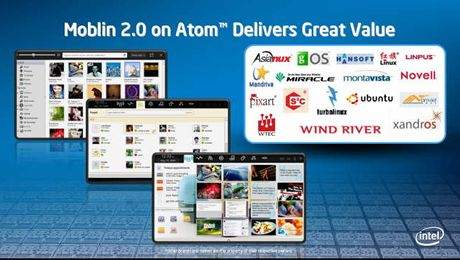Chip firm Intel made much of its next generation Atom chip earlier this week at Computex.
Senior VP Sean Maloney claimed that the digital divide still cuts off five billion humans around the planet and that affordable small devices will help bridge that device. He claimed people who worked on the Internet earned 17 percent more than people who didn’t.
Intel is pushing “nettops” which will come with embedded WiMAX. Its Project Blue is an Indian project which combines technology aimed at the masses. PC penetration in India is only three percent, Internet penetration two percent. Nettops offer an affordable connectible answer to help bridge that device.
The Indian government wants 500 million people to be connected by 2012, using a 100 million devices. WiMAX offers the right kind of connectivity and HCL will roll out a set of products and services with Indian telco BSNL. The aim is to bring connectivity to 675,000 Indian villages.

Intel demonstrated Linux OS Moblin 2.0 – we have a small notebook here that we will review in the next week or so. Moblin promises longer battery life and also integrates social networking so you can add your Twitter or your Facebook from within the notebook. It can also integrate Android apps and games and will connect to WiMAX where that’s available.
Pine Trail is the next generation of chips for netbooks, expounded on later in the day by Intel “rockstar” Mooly Eden. Eden denied that netbooks “cannibalized” its notebook space because it represented an extra to a notebook, rather than a replacement for one. Netbooks offer limited usage and can live side by side with notebooks. Intel had better tell retail stores that because it’s not everyone who goes to buy a machine that can understand the difference – they generally understand price.
A netbook is “for the heart” and will help close the gap between the have and the have-nots.
Eden showed off three Pine Trail based prototype systems – one of which was running Windows 7 starter edition, and an MSI and Asus systems running Windows XP. The microprocessor will ship by the end of this year. It will use just two chips rather than the current three. Why not one? Answer came there none.






